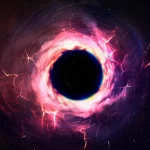Key Takeaways:
- Consciousness, traditionally viewed through a materialistic lens, is now subject to diverse theories, including panpsychism, which proposes that consciousness pervades the universe.
- The debate on consciousness spans disciplines like physics, cognitive science, and neuroscience, with each offering unique perspectives on its nature and origin.
- Concepts like the participatory anthropic principle and integrated information theory highlight the intricate relationship between consciousness, observation, and the fundamental laws of physics.
- Emerging evidence challenges conventional explanations, such as Matloff’s hypothesis linking Parenago’s Discontinuity to potential conscious behavior in celestial bodies, offering new avenues for astronomical inquiry.
- The pursuit of understanding consciousness extends to practical experiments, such as Koch’s endeavors to measure consciousness levels in organisms through brain wiring experiments, illuminating the complex interplay between biology and consciousness.
Removing the brain from the equation results in the non-existence of consciousness altogether. Historically, scientists have predominantly adhered to materialism. However, this approach has led them to confront the constraints of materialism. Examples include the disparities between relativity and quantum mechanics, or the uncertainty principle proposed by Heisenberg, which highlight these discrepancies.
The origins and nature of consciousness have puzzled thinkers throughout history across various societies. In contemporary times, this enigma is increasingly addressed by physicists, cognitive scientists, and neuroscientists. Several prevailing theories exist. Materialism suggests that consciousness arises from matter, particularly through the activity of neurons within the brain.
Alternatively, mind-body dualism posits that consciousness is distinct from matter, often associated with religious or spiritual concepts, where it may be referred to as the soul. Another emerging perspective gaining traction in certain scientific circles is panpsychism, which proposes that consciousness permeates the entire universe.
While some scientists are beginning to consider this theory, it remains a topic of intense debate. Interestingly, panpsychism bears resemblance to the Hindu and Buddhist concept of Brahman, the universal divine essence in which all beings participate. According to Buddhist philosophy, consciousness constitutes the sole reality.
This notion is encapsulated in the well-known Zen koan, “If a tree falls in a forest and no one is around to hear it, does it make a sound?” This highlights the idea that our perception shapes our reality. Without consciousness, the universe lacks existence, or at least lacks an observer to perceive it. Some within the realm of physics entertain the notion of a proto-consciousness field.
In quantum mechanics, particles exist in a state of indeterminacy until observed or measured. Could this phenomenon reflect a form of proto-consciousness? The late physicist and philosopher John Archibald Wheeler proposed this idea, suggesting that all matter possesses some degree of consciousness derived from a proto-consciousness field.
Wheeler termed this concept the “participatory anthropic principle,” emphasizing the role of human observation in the manifestation of reality. In alignment with Buddhist philosophy, Wheeler asserted that existence hinges upon the presence of consciousness.
Neuroscientist Christof Koch, associated with the Allen Institute for Brain Science, also supports panpsychism. Koch defines consciousness as a level of self-awareness and awareness of the external world. According to him, biological organisms exhibit consciousness by adapting their behavior to navigate novel situations. Koch aims to quantify the level of consciousness in organisms through experimental research, including studies involving animal brains wired together.
Renowned physicist Sir Roger Penrose further advocates for panpsychism, proposing that consciousness operates at the quantum level within the brain’s synapses. Penrose correlates consciousness with phenomena in quantum mechanics.
Although hesitant to label himself a panpsychist, Penrose suggests that the laws of physics give rise to complex systems, culminating in consciousness, which in turn facilitates the formulation of mathematical principles underlying these laws.
Physicist Gregory Matloff of the New York City College of Technology presents preliminary evidence supporting panpsychism’s plausibility. Matloff explores the potential for conscious manipulation among celestial bodies, such as stars, suggesting that Parenago’s Discontinuity may be indicative of conscious behavior in stars.
Matloff’s hypothesis challenges the conventional explanation involving interactions with gas clouds and underscores the need for further astronomical observation, particularly through endeavors like the European Space Agency’s Gaia space telescope.
Moreover, Matloff theorizes that a proto-consciousness field could serve as an alternative explanation for dark matter, which constitutes a significant portion of the universe’s mass yet remains undetectable. This proposition prompts inquiries into how consciousness coalesces on a subatomic scale.
Neuroscientist and psychiatrist Giulio Tononi of the University of Wisconsin-Madison proposes an alternative perspective termed integrated information theory. According to this framework, consciousness is a tangible phenomenon with a physical presence in the universe, although its exact location remains elusive. Tononi introduces a metric called phi to quantify the degree of consciousness possessed by entities, distinguishing it from intelligence.
Tononi’s theory challenges the assumption that consciousness and intelligence are synonymous, suggesting that artificial intelligence could achieve consciousness independently of human intervention. Many futurists, including Ray Kurzweil and Elon Musk, anticipate the emergence of conscious AI within the next decade, prompting discussions on its implications for society.
For further insights into Sir Roger Penrose’s perspectives on panpsychism, click here:


